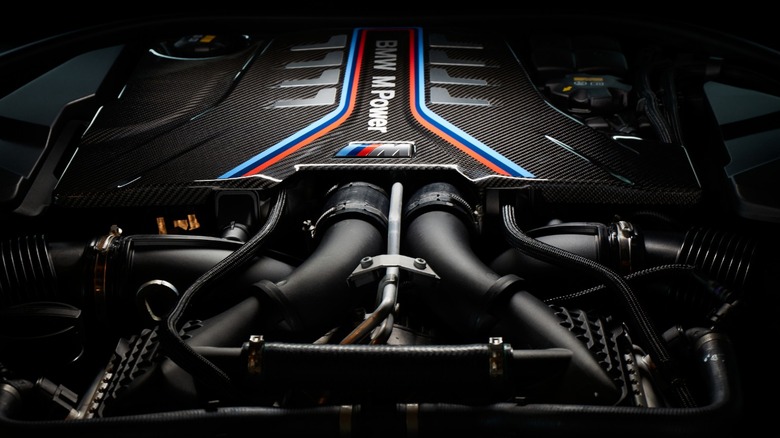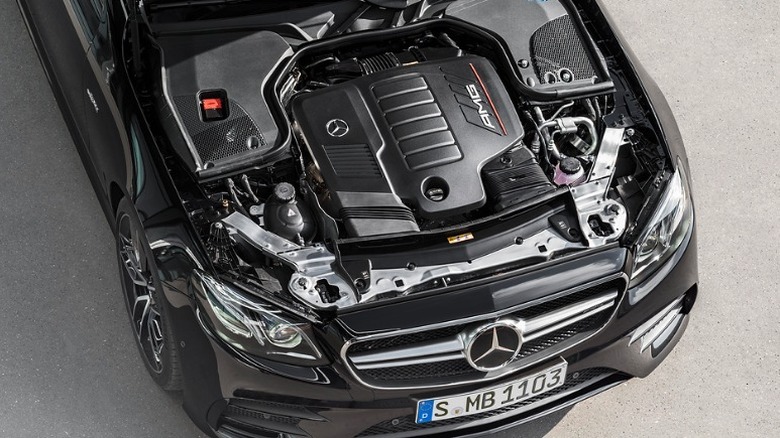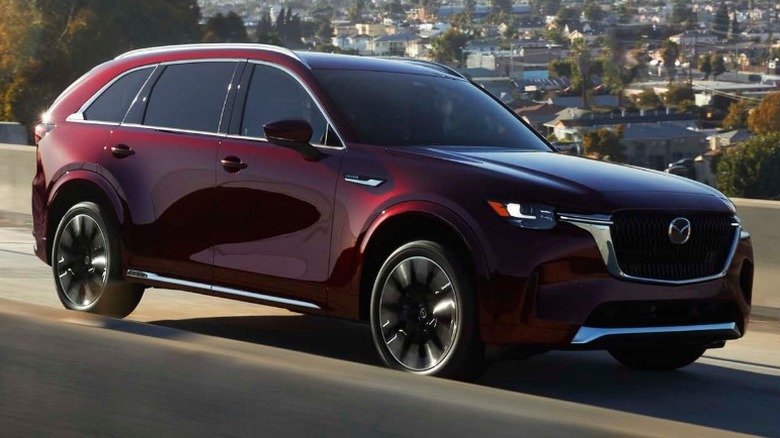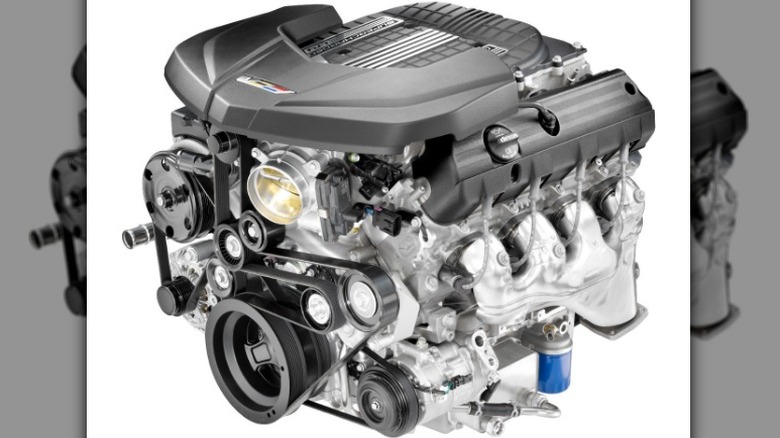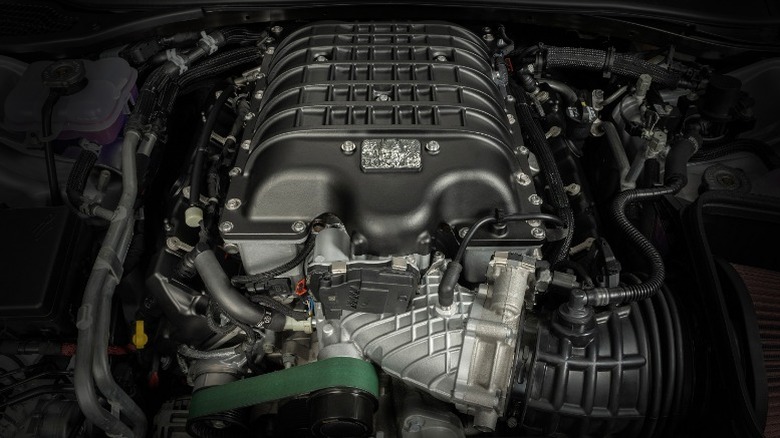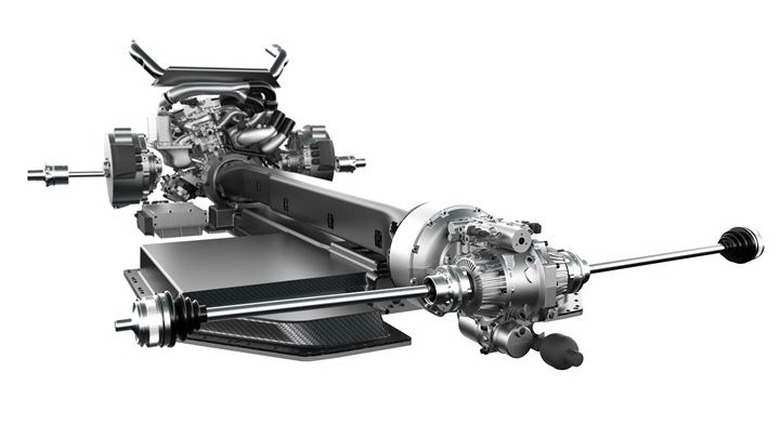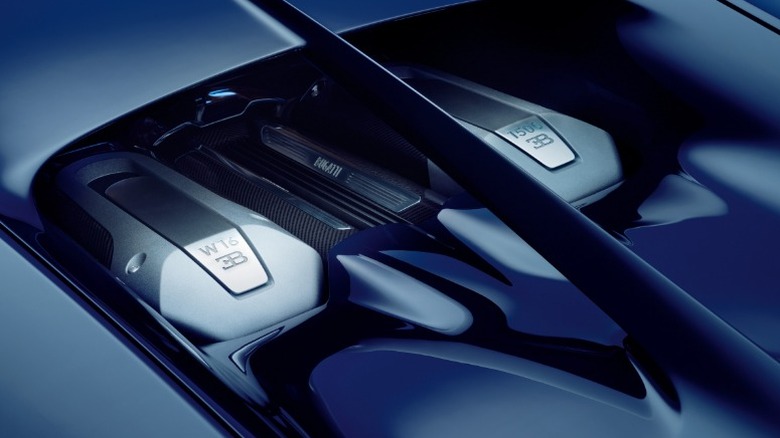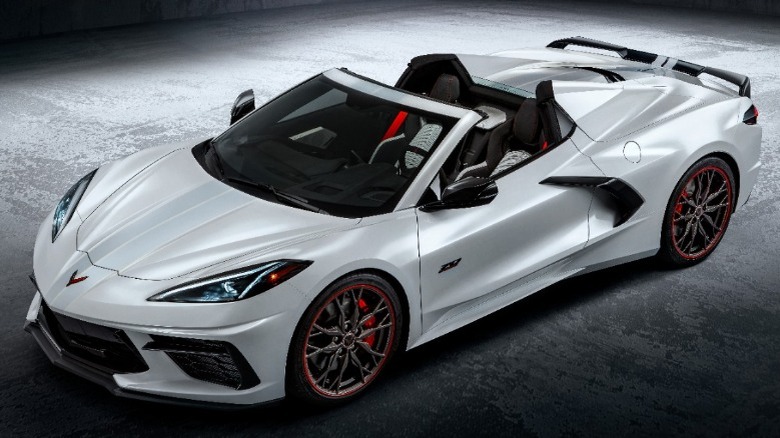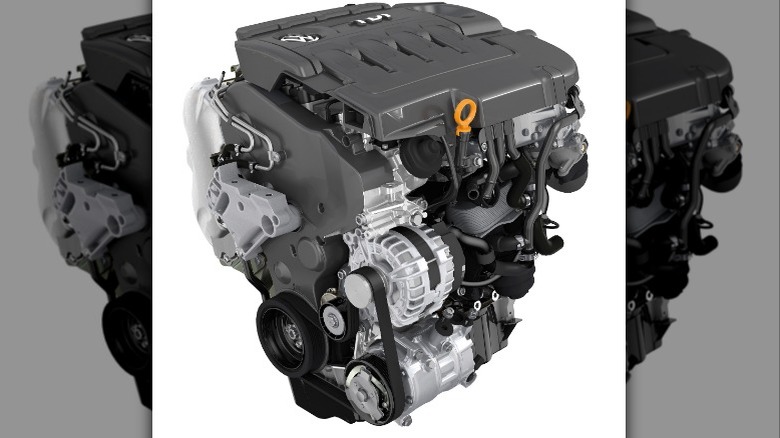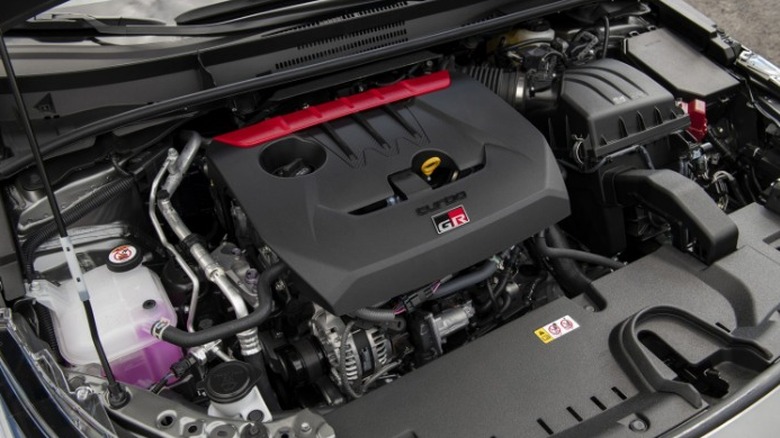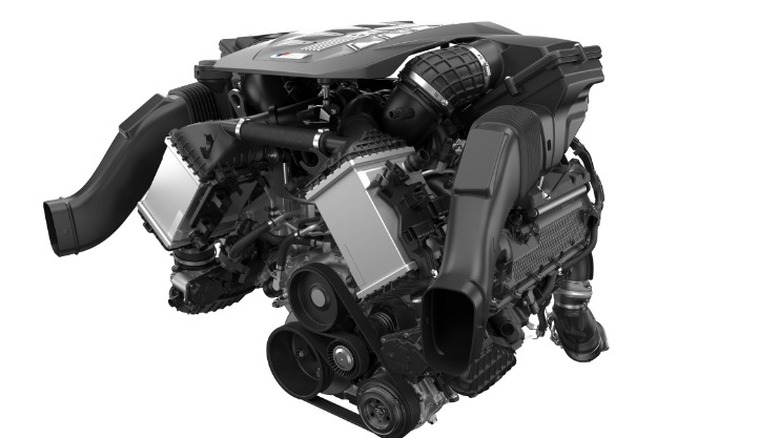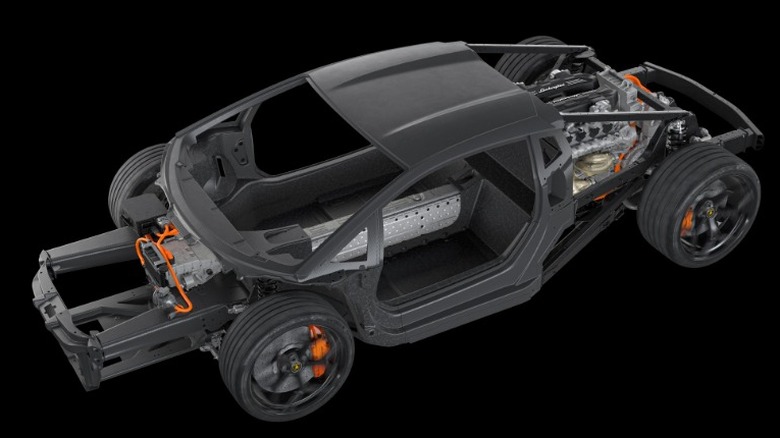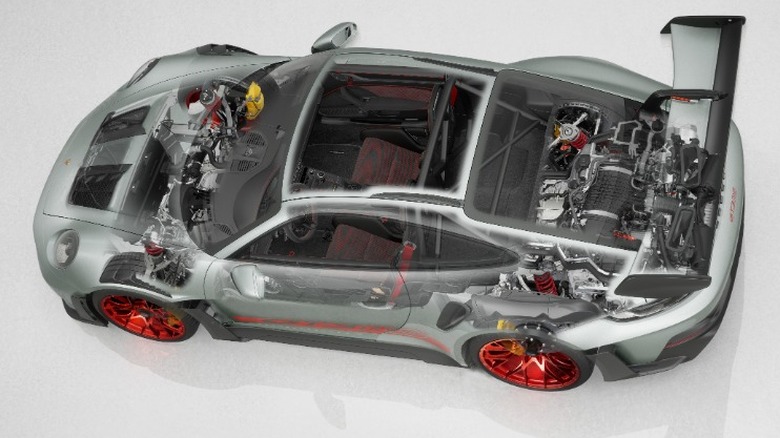12 Best Car Engines Currently In Production Today
While the electric car is gaining ground and market share with each passing year, the venerable internal combustion engine is not dead yet. It has a long history and is one of the most important inventions of the 19th Century. Massive efforts in research and development have been poured into improving the ICE over the decades, leaving us with an engine that is fundamentally similar to the earliest models, but drastically different in almost every technical aspect. Thus, the modern engine is a far cry from its ancestors, but so much better in every way.
Many companies have signaled their intention to phase out gasoline and diesel-powered engines, but that is still many years off in the future. We will still have combustion engines for at least the short-term and most automakers are not cutting production just yet. The technical prowess of modern engineers is on display on many engine models, and the ability to extract increasing power and efficiency from hunks of iron and aluminum is an impressive feat. So, before we read a eulogy on the gasoline-powered engine, here's a look at 12 of the best of them still in production right now.
Mercedes-Benz AMG twin-charged 4-cylinder
The high-performance arm of the Mercedes-Benz company called AMG first worked on one of the company's 4-cylinder engines when it kitted out a 1990 190E model for a homologation special car for racing. AMG was an independent company at the time, but would eventually become part of the company as an in-house tuner. One of the latest creations to come from this division is a wickedly powerful four-cylinder that pushes the limits of engineering to a stunning result.
Powering current AMG GLA and CLA models is a 2.0-liter 4-cylinder engine that combines turbocharging with an electric supercharger to deliver up to 416 horsepower. In contrast to Mercedes' typically longitudinal engines of large sedans and coupes, this one is mounted transversely, but power is sent to all four wheels. This transverse setup allows for a compact package, but the advanced engineering makes the engine the most powerful 4-cylinder on the market. A few of the many technical details that contribute to the high power delivery are the engine block chill-cast aluminum, which uses a metallic liquid-cooled mold that quickly solidifies the molten aluminum for high strength, a twin-scroll turbocharger with ball bearing and cooling by water, air, and oil, and cylinders coated with AMG Nanoslide for reduced friction. Frankly, the list of innovative engineering details is rather long, but the impressive power output per liter of 208 horsepower, puts it within the range of engines found in Ferrari, McLaren, and Bugatti vehicles.
Mazda inline-6
The all-new Mazda inline-6 is not yet available for sale, but is in production to be installed in cars to be delivered for the 2024 model year. This block is a departure from Mazda's long history of developing and perfecting its range of 4-cylinder engines during its recent history, but will surely put the brand up a notch in terms of offering a competitive product.
The new engine is a longitudinally-mounted 3.3-liter turbocharged inline-6 with a power rating of 340 horsepower and 369 ft-lb of torque in the S trim level. Considering Mazda has been equipping its largest vehicle, the CX-9, for many years with a 2.5-liter turbocharged 4-cylinder, this engine will be a substantial upgrade and power the CX-9 replacement, the CX-90. Power delivery will be augmented by Mazda's M Hybrid mild hybrid drive system that supplements the engine with electric power, but will be increased from 24-volt to 48-volt for the upcoming SUV.
This engine shows that the company wants to attract premium buyers by delivering the kind of performance typical of a Mercedes or BMW, but at a more affordable price. With Mazda's latest upscale interiors and matching quality, this should be a big hit in the upcoming year.
Cadillac LT4 V8
For decades, Cadillac was known for building lumbering land yachts powered by laughably large V8 engines. In recent years, the American luxury carmaker has changed things up a bit and has shown that it can compete with the best European sports sedans. To that end, Cadillac released its Blackwing cars with a massively powerful LT4 V8 engine.
The Blackwing LT4 engine is slated to be one of Cadillac's last two gasoline-powered engines ever built as the carmaker transitions to an all-electric lineup. This is ending more than a century of engine building on a considerably high note, as the LT4 is a real fire-breathing monster of an engine. The CT5-V Blackwing is a hand-assembled pushrod V8 that is equipped with a supercharger and produces 668 horsepower, more than three times the horsepower of the 8.2-liter V8 of a 1974 Eldorado. Also a departure from classic Cadillacs is the available 6-speed transmission along with superb handling and a refined interior. Cadillac has had many excellent engines throughout its history, including the V16 of the '30s, and this LT4 is definitely the most refined, innovative, and powerful. It is available now, but engine production is planned to be phased out by 2030.
Dodge Supercharged 6.2L HEMI
Dodge's HEMI brand of V8 engines built with hemispherical combustion chambers has a history that stretches back to the post-war period when every American automaker sought to have an innovation that would make its cars more appealing than the competition. While the legendary 426 HEMI and other engines of the muscle car heyday of the 1960s will forever be revered, the modern HEMI is the king of power. However, this one is not long for this world as production will end soon, with Stellantis focusing on likely more powerful, yet quieter electric propulsion for future muscle cars.
With the benefit of modern technology and probably a lack of rational decisions by managers at Dodge, the current Supercharged 6.2L HEMI engine dwarfs the classics of the '60s in terms of power output. For example, the most powerful Dodge of the muscle car era was the 1970 Plymouth 'Cuda with the 426 HEMI, which made 425 horsepower from the factory. The current 6.2-liter HEMI nearly doubles that at a neck-breaking 807, and Dodge recently even released a run of 100 of 7.0-liter "Helliphant" HEMIs making an astonishing 1,000 horsepower. There is a lot of technology packed into the block and the whining supercharger is an intoxicating sound, but the only thing that matters is that it is a brute and drivers must be very careful because this one can cause a car to be wrapped around a telephone pole before you can even process what happened.
Koenigsegg Tiny Friendly Giant
For a couple of decades, Koenigsegg has redefined many of the basics of automotive design and engineering while creating some of the most desirable, expensive, and exclusive hypercars on the planet. For the first few iterations of its cars, Koenigsegg has used variations of a V8 engine to achieve incredibly high output by incorporating innovative technology and novel thinking in its approach to building cars. With its first four-seater car, the Gemera, Koenigsegg has turned everything upside down while creating a superb automobile.
The Koenigsegg Gemera is a hybrid vehicle with an electric drivetrain augmented by a 3-cylinder engine called Tiny Friendly Giant. The car's total power output is a staggering 1,700 horsepower, of which 600 come from a 2.0-liter 3-cylinder engine with no camshafts. This phenomenal output is possible thanks to a pair of sequential turbos and Koenigsegg's proprietary Freevalve technology. The opening and closing of the valves are accomplished with electronically triggered solenoids that are controlled with precision by the engine management software, which not only makes fuel and airflow more precise but also eliminates the weight and power drain from a valvetrain. Using materials of extraordinarily high strength is another key along with a lengthy list of other technical innovations. Sadly, this car's price is $1.7 million, which excludes the budget of just about everybody.
Bugatti W16
This engine is notable for just how it pushes the envelope in every way possible. It has the most cylinders which means it also has the most valves, and it is made on a W-style block that keeps it from being 12 miles long like the old Cadillac V16, and it pushes more than 1,000 horsepower to all four wheels of the Bugatti Chiron and its predecessor, the Veyron.
Following in the footsteps of Bugatti founder Ettore Bugatti, who created some of the most advanced and utterly stunning vehicles of the pre-war period, the current owner Volkswagen created this incredible engine as a fitting tribute and successor to those early machines. Using the innovative technology to create the compact VM VR6 engine, which allowed a 6-cylinder block to fit into a space reserved for a 4-cylinder, VW managed to increase the cylinder count to 16 without making it so large as to be more appropriate for a tank than a supercar. To get power high enough to send the car into Ludicrous Speed, the W16 was built with four camshafts operating 64 valves along with four turbochargers.
The W16 is the pinnacle of supercar engine manufacturing and each one is hand-built in Molsheim, France, home of the original Bugatti factory. The original W16 made reached its goal of 1,000 horsepower when put into production, and has since been upgraded to push the Chiron along with a monstrous 1,500.
Chevrolet LT2 V8
When Chevrolet made good on the proposed mid-engine Corvette, it caused quite a stir. Motor Trend reported at the car's debut that many of the model's faithful were utterly ticked off and completely sour on Corvettes altogether. Yet, the car has done well since then and continues to be possibly the most affordable mid-engine sports car on the market. At the heart of the new car is also a new flat-plane crank pushrod V8 that represents one of the market's best bargains in power.
The new LT2 V8 produces 495 horsepower and 470 lb-ft of torque and, unlike nearly every Ferrari, requires no routine service that dictates complete removal from the chassis. What makes it possible for Chevrolet to offer a nearly 500-horsepower engine in a mid-engine car that costs far less than any Italian supercar is the use of much of the tried and true technology from the existing V8. That means it still uses pushrods, two valves per cylinder, and no forced induction. All of the performance tweaks come from advanced engineering poured into developing the intake and exhaust while beefing up the block and providing significant cooling. The result is an affordable yet fast car that can be taken to the track and compete with almost anything out there. It also maintains the dependability of a Chevrolet V8 along with a robust parts supply and plentiful service centers nationwide. It makes the choice to buy an expensive Italian roadster seem a bit more irrational.
Volkswagen EA288 Evo
Dieselgate effectively ended the ability of VW to sell diesel passenger cars in the U.S., but they are still available in the Old World. Among these engines is the one found in the MK VIII Golf GTD. Much like the Golf GTi many of us are familiar with, the GTD is a high-performance model, but it runs on diesel.
This mill is a VW oil burner equipped with the long-running VW TDI setup, but this engine is all-new as of 2018. When installed into the GTD, it makes a respectable 197 horsepower, but the torque rating of 295 ft-lb is incredible. That much torque in this small car can be felt as it can make it jump off the line in a hurry. For comparison, the gasoline-burning GTi is rated at 272 ft-lb, and that difference may be more significant than you think. As a result, the GTD is quick off the line and punchy, despite having a somewhat heavy engine up front.
With the EVO diesel, VW has applied some modern engineering improvements to reduce its emission — in real tests without the cheating — to levels comparable to clean-burning gasoline engines while boosting power output and efficiency. While those in the States won't be having any opportunities to own this, some lucky Europeans can have it all with an efficient small car with the kind of low-end grunt that makes driving fun.
Toyota 3-cylinder Turbo
Toyota shrunk its engines in the hot hatch offerings of the GR Corolla and GR Yaris by slicing off a cylinder of the typical Toyota 4-cylinder and turbocharging it all the way up to 11. The little triple banger unleashes a mighty 300 horsepower with 273 ft-lb of torque, which makes it more powerful than Corvettes made before from about 1975 to 1990.
For lovers of horsepower who are also enthralled with hot hatches, the idea of buying a brand-new car with only three cylinders seems like a non-starter at first glance. Yet, Toyota has managed to build one of the hottest hot hatches in years and should quickly overcome any trepidations about the low cylinder count upon a first test drive.
The 3-cylinder engine displaces 1.6 liters and was designed from the ground up for performance. It is also hand-built and includes many technical features that contribute to its impressive power output. The turbo, which delivers more than 20 pounds of boost, spins on ball bearings and is integrated into the exhaust manifold while fuel is fed through direct and port injection. The pistons benefit from oil-jet cooling bolstered by a large oil cooler and back pressure in the exhaust is lowered by its central tailpipe. With its 100 horsepower per cylinder, this engine sits among a small pool of engines with such a power ratio, and it is bested in overall power from a 3-cylinder only by the uber-expensive Koenigsegg Tiny Friendly Giant.
BMW M TwinPower Turbo V8
Continuing a long tradition of delivering lots of raw power in a highly refined package, the BMW M 4.4-liter V8 produces more than 600 horsepower through high-tech engine building and some of the most advanced engine components ever made. It is impressive, but it also comes at a premium.
The most recent iteration of the BMW 4.4-liter V8 from the company's high-performance M division is a clean sheet design that incorporates BMW's already advanced features with several new ones. Some upgrades include new internals, turbocharger upgrades, and an electric VANOS (variable valve timing) system, a first for BMW as the old one is hydraulically actuated from engine oil pressure. The most significant new feature is a 48-volt mild hybrid system. While many engines with this type of setup integrate the electric motor into the crankshaft, the motor is a part of the transmission itself and will improve the start/stop function.
This BMW engine is likely to be the last V8 engine manufactured by BMW as Euro7 emissions compliance will likely dictate smaller engines and more electrics in the future. The more stringent emissions requirements are also why it appears that this engine will also be used in models outside of the M range, but in a detuned state, although that is not confirmed.
Lamborghini L539 V12
The model designation of the current Lambo V12 is the same as the first one from the Miura, but it has changed much over the years. The current block is the second generation after 50 years of production of this design, but it soldiers on toward the future as one of the last V12 engines still produced.
The news with the latest heart of the Raging Bull is that it will be found in the next flagship, replacing the aging Aventador, and it will be the first hybrid model from the company. However, this marriage of electrons and hydrocarbons will result in an all-new Lamborghini that will make around 1,000 horsepower and rev up to 9,500 rpm. The addition of electric propulsion not only adds to the total power output but has also helped Lamborghini to reduce its emissions output by 30%.
The new car will continue to have all-wheel-drive, but the engine will now be disconnected from the front wheels, with dual electric motors providing all the pull-up front and a third attached to the rear axle. The electric driving range has not yet been announced, but the company claims that the 3.8kWh, residing in the space that once housed the front driveshaft, can be charged via plug in 30 minutes or by the engine in six. This setup appears to be the future of Italian supercars and it honestly looks pretty good.
Porsche 4.0-liter boxer
Despite being in production for nearly 60 years, Porsche has retained the same basic shape, layout, and engine design of its flagship 911 sports car. Rear-engine car designs are, on the surface, inherently flawed and undesirable. However, Porsche has managed to capitalize on this layout to extract its benefits, creating one of the best-handling and engaging cars ever built. Porsche's engineering also extracts as much advantage as possible from its engine layout, the boxer, also known as a horizontally opposed piston engine. The center of gravity is inherently lower than any other engine design and that contributes greatly to good handling characteristics.
While Porsche has worked to perfect its flat-6 boxer engine through the years, it has done so without adding cylinders nor has it significantly increased displacement. Despite keeping its size limited to under four liters as of the time of writing, Porsche has created many cars with more power than plenty of big American V8s that go way over the 5.0-liter mark.
The current Porsche 4.0-liter boxer is available in the 911 GT3 RS making 518 horsepower. This engine makes this much power most impressively without the use of forced induction, instead opting for highly advanced engineering and state-of-the-art materials. Its internals are forged from high-strength steel and titanium and the cylinders are plasma-coated, allowing for extremely quick throttle response and overall power delivery.
